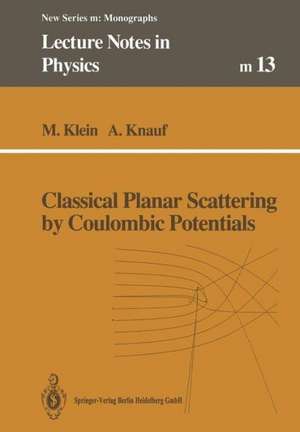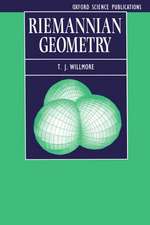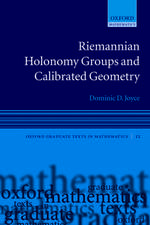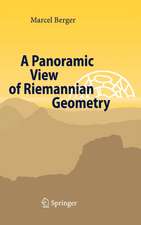Classical Planar Scattering by Coulombic Potentials: Lecture Notes in Physics Monographs, cartea 13
Autor Markus Klein, Andreas Knaufen Limba Engleză Paperback – 23 aug 2014
Din seria Lecture Notes in Physics Monographs
- 20%
 Preț: 564.57 lei
Preț: 564.57 lei - 15%
 Preț: 651.51 lei
Preț: 651.51 lei -
 Preț: 379.09 lei
Preț: 379.09 lei -
 Preț: 392.75 lei
Preț: 392.75 lei - 15%
 Preț: 634.82 lei
Preț: 634.82 lei - 15%
 Preț: 646.94 lei
Preț: 646.94 lei - 20%
 Preț: 562.55 lei
Preț: 562.55 lei -
 Preț: 379.86 lei
Preț: 379.86 lei - 18%
 Preț: 723.38 lei
Preț: 723.38 lei - 15%
 Preț: 635.47 lei
Preț: 635.47 lei -
 Preț: 387.38 lei
Preț: 387.38 lei -
 Preț: 376.80 lei
Preț: 376.80 lei - 15%
 Preț: 695.85 lei
Preț: 695.85 lei -
 Preț: 395.85 lei
Preț: 395.85 lei -
 Preț: 379.68 lei
Preț: 379.68 lei -
 Preț: 388.13 lei
Preț: 388.13 lei -
 Preț: 384.48 lei
Preț: 384.48 lei -
 Preț: 379.86 lei
Preț: 379.86 lei -
 Preț: 383.12 lei
Preț: 383.12 lei -
 Preț: 385.84 lei
Preț: 385.84 lei -
 Preț: 381.00 lei
Preț: 381.00 lei -
 Preț: 385.47 lei
Preț: 385.47 lei -
 Preț: 378.71 lei
Preț: 378.71 lei -
 Preț: 384.70 lei
Preț: 384.70 lei -
 Preț: 395.47 lei
Preț: 395.47 lei -
 Preț: 389.31 lei
Preț: 389.31 lei -
 Preț: 379.68 lei
Preț: 379.68 lei -
 Preț: 383.71 lei
Preț: 383.71 lei -
 Preț: 381.00 lei
Preț: 381.00 lei -
 Preț: 384.70 lei
Preț: 384.70 lei - 18%
 Preț: 783.35 lei
Preț: 783.35 lei -
 Preț: 386.81 lei
Preț: 386.81 lei -
 Preț: 395.09 lei
Preț: 395.09 lei - 15%
 Preț: 693.25 lei
Preț: 693.25 lei - 18%
 Preț: 896.08 lei
Preț: 896.08 lei - 15%
 Preț: 648.42 lei
Preț: 648.42 lei - 15%
 Preț: 661.84 lei
Preț: 661.84 lei - 15%
 Preț: 641.20 lei
Preț: 641.20 lei - 15%
 Preț: 643.34 lei
Preț: 643.34 lei -
 Preț: 391.61 lei
Preț: 391.61 lei - 18%
 Preț: 1230.66 lei
Preț: 1230.66 lei -
 Preț: 311.31 lei
Preț: 311.31 lei
Preț: 381.21 lei
Nou
Puncte Express: 572
Preț estimativ în valută:
72.95€ • 79.22$ • 61.28£
72.95€ • 79.22$ • 61.28£
Carte tipărită la comandă
Livrare economică 22 aprilie-06 mai
Preluare comenzi: 021 569.72.76
Specificații
ISBN-13: 9783662139004
ISBN-10: 3662139006
Pagini: 152
Ilustrații: V, 142 p.
Dimensiuni: 170 x 244 x 8 mm
Greutate: 0.25 kg
Ediția:Softcover reprint of the original 1st ed. 1992
Editura: Springer Berlin, Heidelberg
Colecția Springer
Seria Lecture Notes in Physics Monographs
Locul publicării:Berlin, Heidelberg, Germany
ISBN-10: 3662139006
Pagini: 152
Ilustrații: V, 142 p.
Dimensiuni: 170 x 244 x 8 mm
Greutate: 0.25 kg
Ediția:Softcover reprint of the original 1st ed. 1992
Editura: Springer Berlin, Heidelberg
Colecția Springer
Seria Lecture Notes in Physics Monographs
Locul publicării:Berlin, Heidelberg, Germany
Public țintă
ResearchCuprins
The Scattering Transformation.- Regularization.- Periodic Orbits.- Existence of an Invariant Cone Field.- Symbolic Dynamics.- Topological Entropy.- The Distribution of the Closed Orbits.- Fractional Dimension.- Time Delay.- Measure of the Bound States.- The Differential Cross Section.- Concluding Remarks.


















